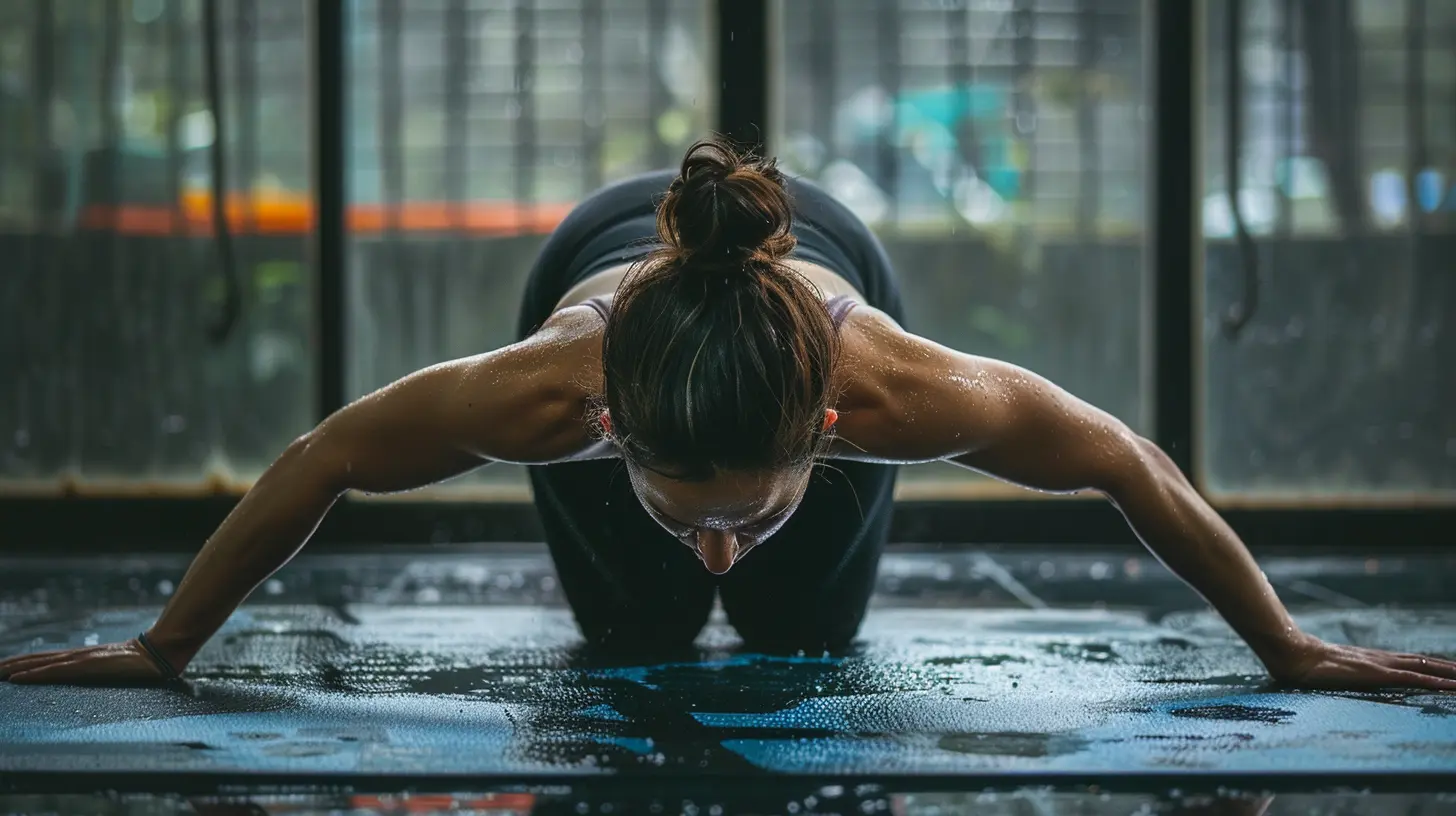
Newsletter Subscribe
Enter your email address below and subscribe to our newsletter

Enter your email address below and subscribe to our newsletter

Are you aware that some professional athletes can suffer injuries that are equivalent to being in a car crash during intense training or competition? In this blog post, we delve into the critical role that flexibility exercises play in enhancing athletic performance and safeguarding athletes from such severe injuries. Let’s uncover the secrets behind why flexibility is key for athletes striving for success.
Flexibility exercises are often overlooked in training routines, but they play a crucial role in enhancing an athlete’s performance and overall well-being. Incorporating flexibility exercises into your training regimen can offer a wide range of advantages that can help you reach your peak potential. Let’s delve into some specific benefits that flexibility exercises can provide for athletes.
One of the key benefits of flexibility exercises is the significant increase in range of motion they offer. By regularly stretching and working on flexibility, athletes can improve their joint mobility and muscle flexibility. This increased range of motion allows athletes to move more freely and efficiently, which can directly translate to improved performance in their respective sports.
Flexibility exercises also play a vital role in improving muscle coordination. When muscles are more flexible, they can work together more effectively, leading to better overall coordination and control during athletic movements. This improved coordination can help athletes perform complex skills with greater precision and reduced risk of injury.
Another significant advantage of flexibility exercises is their ability to enhance recovery after intense training sessions or competitions. Stretching and flexibility work can help alleviate muscle soreness, reduce the risk of muscle imbalances, and promote faster recovery by increasing blood flow to the muscles.
Flexibility exercises are a valuable addition to any athlete’s training routine, offering a multitude of benefits that can positively impact performance and overall well-being. By prioritizing flexibility training alongside strength and conditioning, athletes can unlock their full potential and excel in their chosen sport.

Flexibility is a crucial component of athletic performance and overall health. By incorporating various types of flexibility exercises into their training routine, athletes can enhance their range of motion, reduce the risk of injuries, and improve their overall athletic performance. In this blog post, we will delve into three main types of flexibility exercises: static stretching, dynamic stretching, and proprioceptive neuromuscular facilitation (PNF) stretching.
Static stretching involves holding a stretch for a period of time without moving. This type of stretching is effective in improving flexibility and is often used during cool-downs after a workout. Some key points about static stretching include:
Dynamic stretching involves moving through a full range of motion in a controlled manner. This type of stretching is beneficial for warming up the muscles before a workout or athletic event. Some key points about dynamic stretching include:
PNF stretching is a more advanced form of flexibility training that involves a combination of stretching and contracting the muscles. This type of stretching is often done with a partner and is highly effective in improving flexibility. Some key points about PNF stretching include:
By incorporating a combination of static, dynamic, and PNF stretching into their training regimen, athletes can optimize their flexibility, enhance performance, and reduce the risk of injuries. Experimenting with different types of flexibility exercises and finding what works best for individual needs can lead to significant improvements in overall athletic performance.
Flexibility exercises play a crucial role in an athlete’s training regimen. They not only help in preventing injuries but also improve performance by enhancing range of motion and muscle coordination. However, the timing of when to incorporate flexibility exercises into a training routine can significantly impact their effectiveness. Let’s delve into the best timing for athletes to engage in flexibility exercises.
Performing flexibility exercises before a workout can help prepare the muscles for the upcoming physical activity. It can help increase blood flow to the muscles, improve joint mobility, and enhance muscle activation. Here are some benefits of incorporating flexibility exercises before a workout:
Flexibility exercises after a workout can aid in muscle recovery and promote relaxation. Stretching the muscles that have been worked during the training session can help reduce muscle soreness and improve overall flexibility. Here’s why athletes should consider incorporating flexibility exercises after their workout:
Active recovery periods are crucial for athletes to allow their bodies to recuperate between intense training sessions. Incorporating flexibility exercises during active recovery can help maintain flexibility, prevent muscle stiffness, and promote blood circulation. Here’s why athletes should include flexibility exercises during active recovery periods:
In conclusion, the best timing for athletes to engage in flexibility exercises depends on their specific goals and training routine. Whether it’s before a workout to prepare the body, after a workout to aid in recovery, or during active recovery periods to maintain flexibility, incorporating flexibility exercises strategically can have a significant impact on an athlete’s overall performance and well-being.
Flexibility exercises play a crucial role in an athlete’s training regimen. However, many athletes unknowingly make common mistakes while performing these exercises, which can hinder their progress and increase the risk of injury. In this blog post, we’ll highlight some of these errors and provide tips on how to avoid them for maximum benefit.
One of the most common mistakes athletes make when performing flexibility exercises is holding static stretches for extended periods. While it may seem beneficial to push your muscles to the limit, holding a stretch for too long can actually lead to muscle strain and decreased flexibility.
Tip: Instead of holding a stretch for a prolonged time, aim for 10-30 seconds per stretch. This allows your muscles to lengthen gradually without causing undue stress.
Another mistake athletes often make is skipping warm-up exercises before diving into flexibility training. Without a proper warm-up, your muscles are tight and more susceptible to injury during stretching exercises.
Tip: Always start your flexibility routine with a 5-10 minute warm-up session, such as light jogging or dynamic stretches, to prepare your muscles for more intense stretching.
Some athletes believe that the more they stretch, the better the results. However, overstretching beyond your comfort level can lead to muscle tears and joint injuries, setting back your progress.
Tip: Listen to your body and stretch only to the point of mild discomfort, never to the point of pain. This ensures you’re working within your body’s limits and prevents overstretching.
Breathing plays a crucial role in performing flexibility exercises correctly. Many athletes hold their breath while stretching, which can increase muscle tension and hinder flexibility gains.
Tip: Remember to breathe deeply and rhythmically while performing each stretch. Inhale as you prepare for the stretch and exhale as you move deeper into it, allowing your muscles to relax and lengthen.
Athletes often concentrate on stretching specific muscle groups while neglecting others. This imbalance can lead to overdevelopment in some areas and underdevelopment in others, affecting overall flexibility and performance.
Tip: Incorporate a variety of stretches that target different muscle groups in your flexibility routine. This ensures a balanced approach to improving overall flexibility and reducing the risk of muscle imbalances.
By avoiding these common mistakes and following the tips provided, athletes can maximize the benefits of flexibility exercises, improve overall performance, and reduce the risk of injuries. Remember, consistency and proper technique are key to achieving optimal flexibility gains in your training routine.
In conclusion, flexibility exercises are essential for athletes to enhance their performance and maintain their well-being. Customizing flexibility training to suit individual needs and sports can help athletes achieve optimal results and reduce the likelihood of injuries.
Flexibility training helps athletes by improving range of motion in their joints, which can enhance performance in various sports. It also helps prevent injuries by increasing the flexibility of muscles and tendons. Additionally, flexibility training can improve posture, reduce muscle tension, and promote relaxation, leading to overall better physical and mental well-being for athletes.
Flexibility exercises help in preventing injuries among athletes by improving joint mobility and muscle elasticity. This can enhance the range of motion, reducing the risk of strains and sprains during physical activity. Additionally, increased flexibility can lead to better body alignment and posture, which may help in maintaining proper form while performing sports movements, thereby decreasing the likelihood of injuries. Regular flexibility training can also help to correct muscle imbalances and reduce muscle tightness, which are common risk factors for sports-related injuries.
Yes, there are specific types of flexibility exercises that can be more beneficial for certain sports or athletes depending on their individual needs and the demands of their sport. For example, gymnasts may benefit from exercises that focus on achieving extreme range of motion in the hips and shoulders, while runners may benefit from exercises that target the muscles involved in hip flexion and extension. It is important for athletes to incorporate flexibility exercises that are specific to their sport in order to improve performance and reduce the risk of injuries.
Some examples of flexibility exercises athletes can include in their warm-up or cool-down routines are:
Comments are closed.
I would love to see some specific examples of flexibility exercises that athletes can incorporate into their training routines.
As an athlete, I can attest to the positive impact that regular flexibility work has had on my performance. It’s a key component of my training routine.
I completely agree with the emphasis on flexibility for athletes. It’s crucial for injury prevention and overall performance improvement.
Flexibility has been a game-changer for me in my own athletic journey. It’s amazing how much difference it can make in agility and range of motion.
Are there any studies or research mentioned in the article that support the benefits of flexibility exercises for athletes?
I think more coaches and trainers should prioritize flexibility training alongside strength and conditioning programs. It’s often underrated but so important.